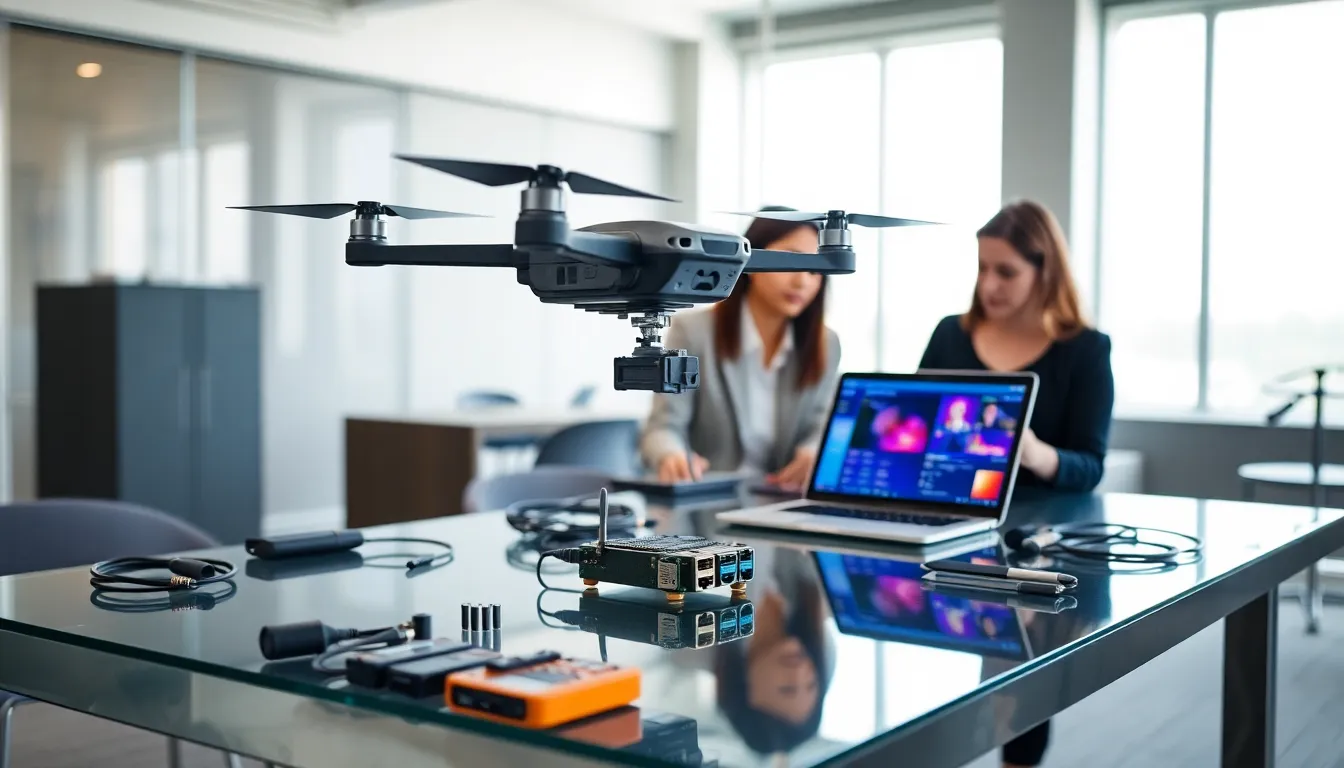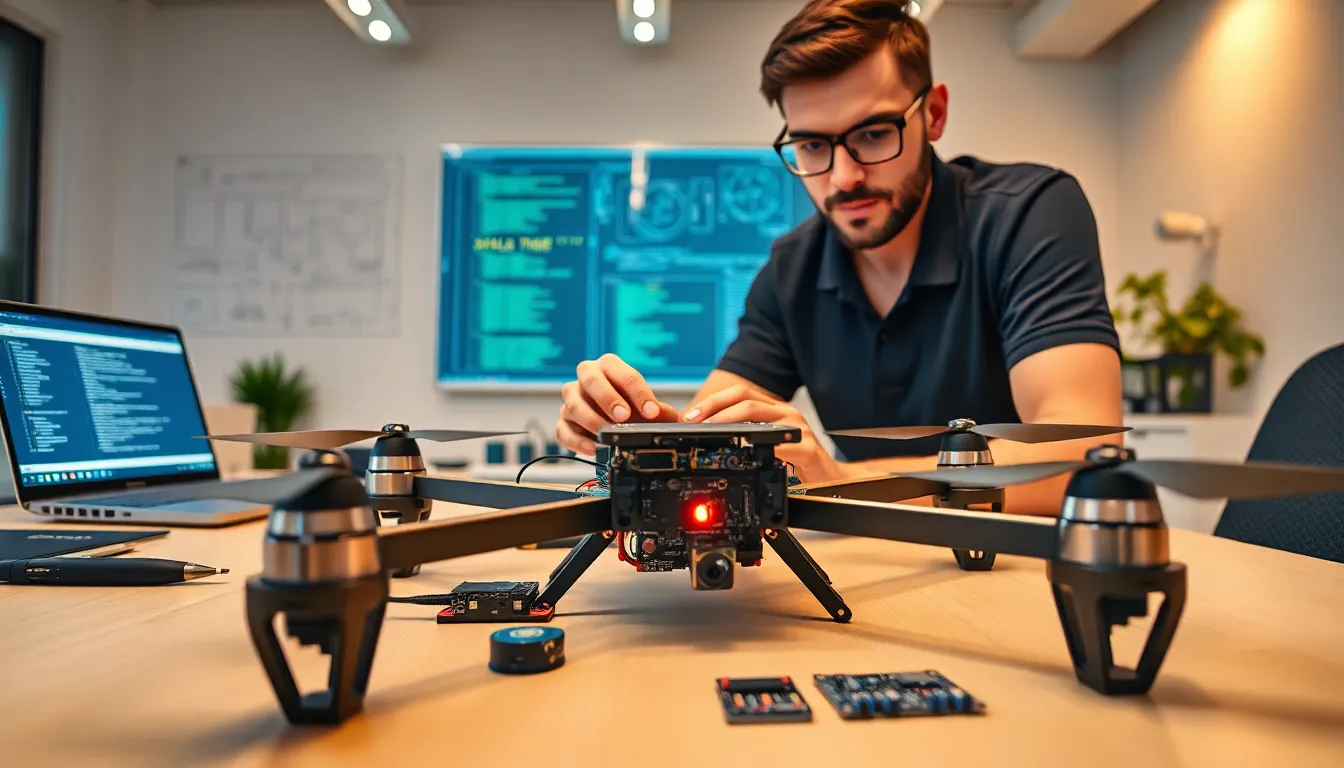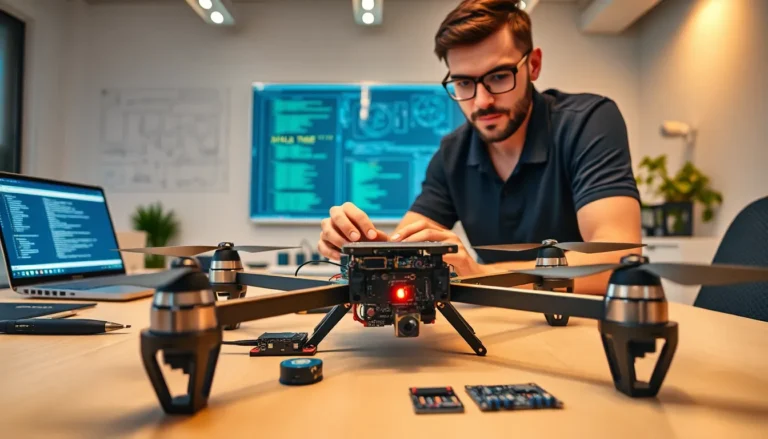Have you ever dreamed of launching your very own thermal imaging drone? With the Raspberry Pi Zero, that dream isn’t just a pipe dream anymore, it’s an exhilarating reality. Picture this: a lightweight, compact drone soaring through the air, equipped with thermal imaging capabilities that allow you to see the world in a new light. While it may sound complicated, this nifty little computer opens the door to limitless possibilities and fun. Join us on this journey as we explore everything from the basics of the Raspberry Pi Zero to the exciting world of DIY drone building. Get ready to elevate your tech game and impress your friends with your newly acquired skills.
Table of Contents
ToggleOverview of Raspberry Pi Zero and Its Applications

The Raspberry Pi Zero is a super compact, low-cost computer that packs a punch for its size. It’s small enough to fit in the palm of your hand yet powerful enough to handle various tasks, making it a favorite among hobbyists and DIY enthusiasts. This tiny powerhouse boasts a 1 GHz single-core CPU, 512 MB of RAM, and an array of ports and connectors to enhance its functionality.
What can you do with such a device? Think outside the box. The Raspberry Pi Zero can run various applications, from simple home automation systems to elaborate robotics projects. Add in thermal imaging, and you have an excellent opportunity to build drones for everything from agriculture to search and rescue. The possibilities are limited only by your imagination.
Advantages of Using Raspberry Pi Zero in Drones
Putting a Raspberry Pi Zero into a drone comes with a slew of advantages. First, the low cost is hard to ignore. Compared to traditional flight controllers, the Raspberry Pi Zero offers a budget-friendly alternative without sacrificing power.
Also, size matters. The slim profile of the Raspberry Pi Zero allows it to fit into small drones, which is particularly useful for those tight spots where space is at a premium. You get a lightweight drone that can carry additional sensors or cameras, making it ideal for various missions.
Also, customization is a game-changer. The open-source nature of Raspberry Pi means users can tweak software and hardware to suit their unique needs. Developing and modifying flight software can make your drone stand out in a sea of commercial alternatives. This flexibility makes it perfect for educational projects, research, and endless exploration.
Thermal Imaging Technology in Drones
Thermal imaging technology adds an entirely new dimension to drone operations. It allows users to see heat patterns and identify temperature differences, making it invaluable in several sectors. Ever wonder how firefighters locate hotspots in a burning building? The answer lies in thermal drones equipped with advanced cameras.
In conservation, drones with thermal imaging detect wildlife, monitor habitats, and even help locate poachers. Agriculture transforms with this technology, as farmers track livestock and evaluate crop health from above. Thermal imaging takes drones from a simple flight toy to an essential tool in modern technology.
Building Your Own Raspberry Pi Zero Thermal Drone
Creating your thermal drone sounds ambitious, but fear not. With the right components and instructions, you’ll be soaring through the skies in no time.
Key Components Required for DIY Thermal Drone
Before diving into assembly, you need the right gear. Essential components include:
- Raspberry Pi Zero: The brains of your drone.
- Camera Module: A thermal camera (like the FLIR Lepton module) will enhance your vision.
- Frame: Choose based on size, aerodynamics, and weight considerations.
- Motors and Propellers: Select appropriate motors to support the drone’s weight.
- Flight Controller: Essential for stabilizing flight.
- Battery: Opt for lightweight lithium polymer batteries for longer flight times.
Step-by-Step Assembly Process
- Assemble the Frame: Attach the motors to the drone frame.
- Connect Electronics: Wiring the Raspberry Pi Zero to the flight controller and camera module is crucial.
- Attach the Propellers: Ensure they are securely fastened for safe flight.
- Double Check Everything: Safety first. Make sure all parts are running smoothly before testing.
Programming and Configuration Tips
After physical assembly, it’s time to program your drone. The Raspbian operating system will allow you to install pertinent applications.
Consider installing libraries specifically designed for camera integration and flight stabilization. This will ensure seamless communication between the Raspberry Pi and the drone components.
Applications and Use Cases for Thermal Drones
The potential applications for thermal drones are vast and varied. In agriculture, as previously mentioned, they monitor crop health by detecting stress levels in plants.
In safety and security, these drones can survey large areas, significantly helping in search and rescue missions. Observing heat signatures also aids in identifying illegal activities like poaching or illicit logging.
Construction industries benefit too, as drones can inspect building heat retention or leaks. Also, the real estate sector uses thermal imaging drones to provide prospective buyers a unique look at homes and properties.
Safety and Regulations for Drone Operation
Navigating the world of drone operation isn’t just about flying high, it’s also about following regulations and ensuring safety. The Federal Aviation Administration (FAA) has set specific guidelines that must be adhered to.
For instance, keeping your drone within visual line-of-sight at all times is critical. Also, you must obtain a remote pilot certificate if flying for commercial use. Knowing local and state laws is equally important, as rules can differ significantly by location.
When operating a thermal drone, consider privacy implications: always ensure that you’re not infringing on anyone’s right to privacy while capturing thermal footage.
Future Trends in Drone Technology with Raspberry Pi
The future of drone technology looks incredibly promising, particularly with the integration of Raspberry Pi. With advancements in machine learning and AI, we can expect drones to become increasingly autonomous and intelligent. The enhancements in battery technology will further extend flight durations.
Also, drones equipped with advanced sensors are likely to gain prominence across industries ranging from agriculture to disaster response. Innovative accessories and peripherals consistently develop, allowing DIY enthusiasts to enhance functionality. As technology progresses, the Raspberry Pi Zero will undoubtedly remain at the forefront, powering the next generation of thermal drones.




